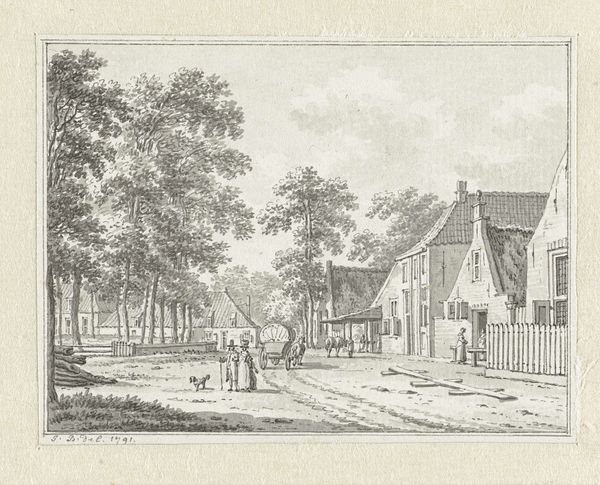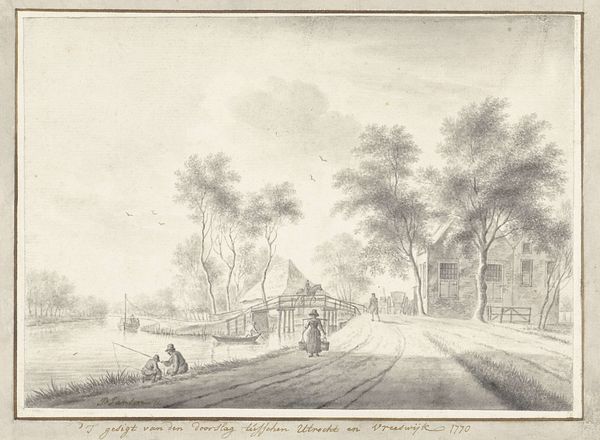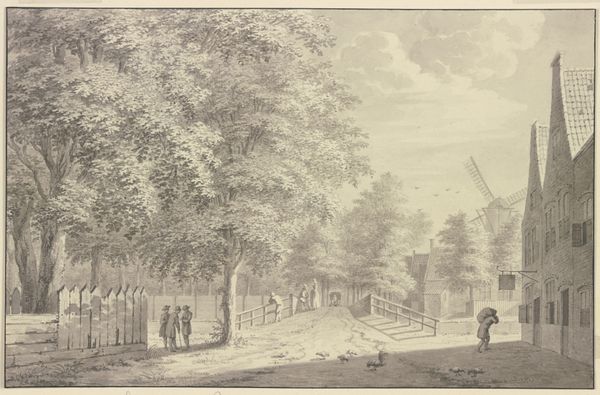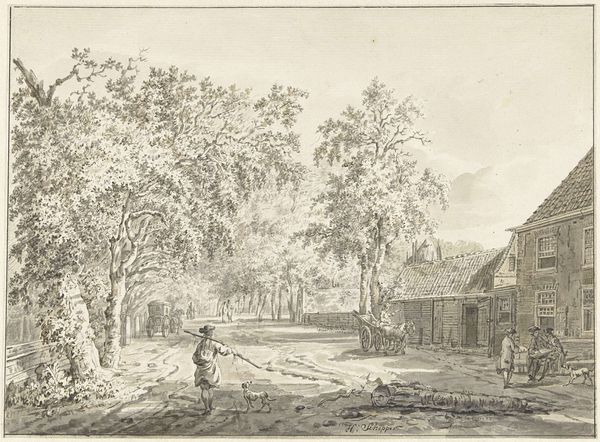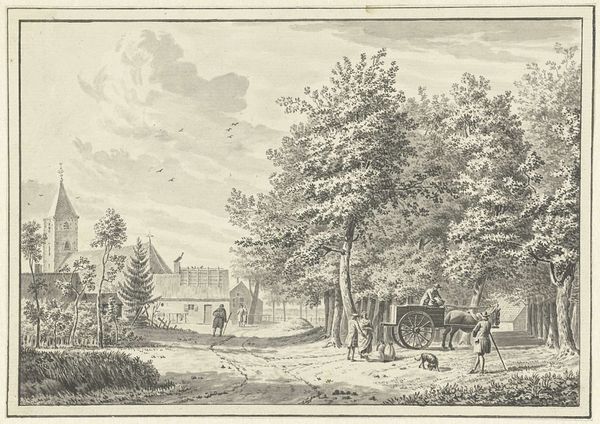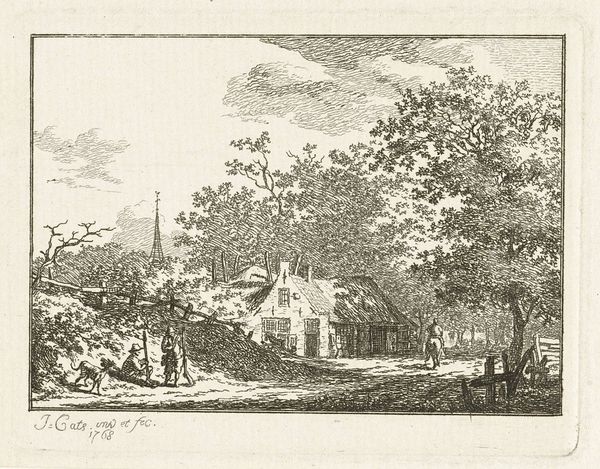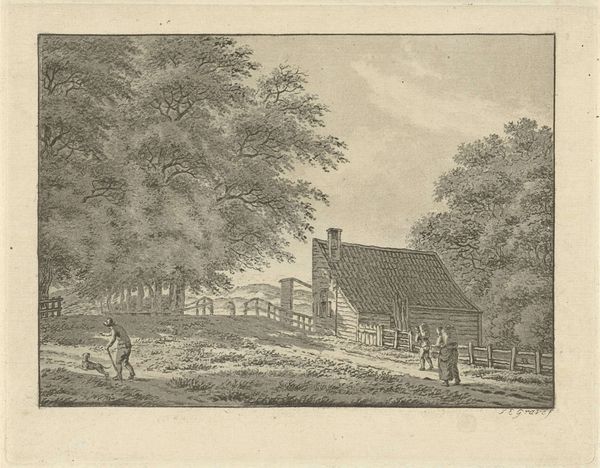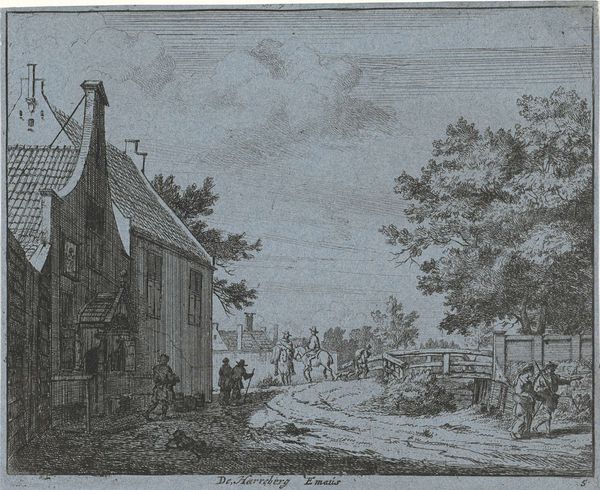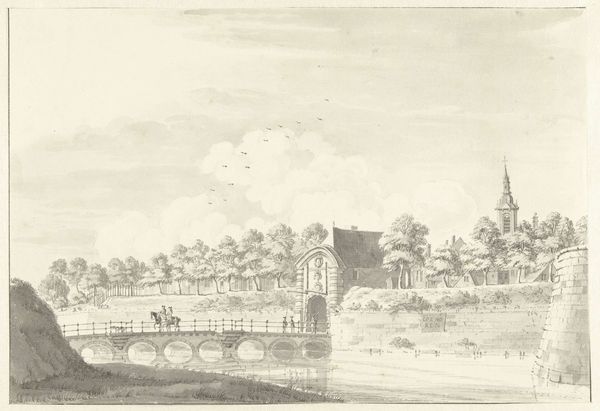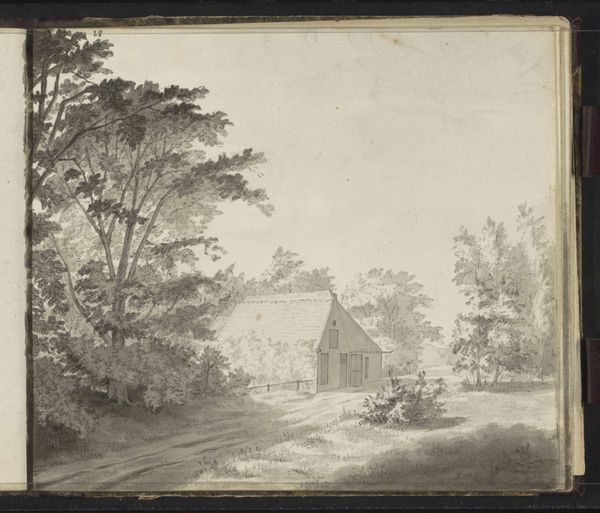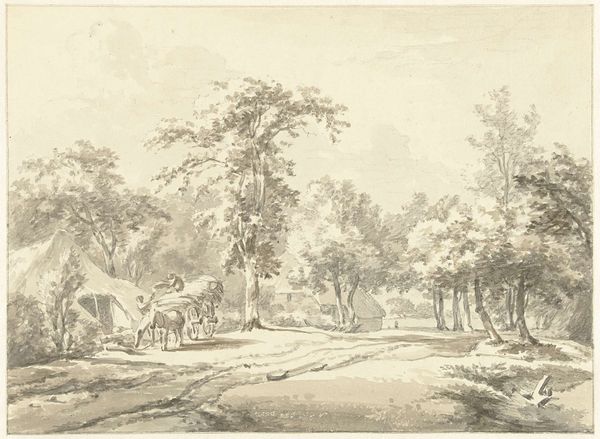
drawing, ink, pen, engraving
#
drawing
#
neoclacissism
#
pen sketch
#
pencil sketch
#
landscape
#
ink
#
pen
#
genre-painting
#
engraving
Dimensions: height 120 mm, width 172 mm
Copyright: Rijks Museum: Open Domain
Curator: Let's discuss "Landscape with a drawbridge and figures in front of an Inn," created in 1771 by Jacob Cats and housed here at the Rijksmuseum. The work is executed with pen and ink, showcasing a quaint Dutch scene. Editor: Immediately, the precision strikes me. The meticulous lines capture a calm stillness; it’s as if the image itself is holding its breath. The limited tonal range almost makes it feel monochromatic. Curator: Indeed, Cats’s mastery is evident in how he utilizes line and form to create depth. Notice the composition's structure—the bridge acting as a visual pivot. It cleaves the space perfectly in the middle and anchors the building on the left to the landscape on the right, producing balanced tension within the picture. Editor: The material reality interests me here. One might easily miss the nuances, but the paper, the ink, and the skill required to render this intricate scene speaks to a specific mode of production. What does a drawbridge symbolize in terms of regional trade and cultural accessibility? The figures congregating, a social tableau is being established as well. It almost feels akin to early reportage—documentation of communal space. Curator: Precisely, although Cats may have been more attuned to compositional balance. See how the characters are arranged with purpose. The building on the left repeats geometrical shapes on the right created by tree forms; each is harmoniously interlocked within a framework where every segment echoes another—this structure amplifies overall impact by unifying disparate pictorial areas. Editor: It compels us to consider how drawings and prints operated as mechanisms for sharing ideas and observations. This landscape is more than visual pleasure, it captures a snapshot of life for later commercial use or memory making—how was this piece commissioned? Was it created from his imagination or for a patron of society? Curator: While Cats’s broader social motives may remain opaque, what stands clear, in my assessment, are structural components forming pictorial arrangement. Each element harmoniously integrates, leading observers deeply toward the flat plain via ingenious visual prompts woven carefully right inside graphic substance employed meticulously everywhere throughout creation. Editor: For me, Jacob Cats’ landscape is also evidence of skilled labor meeting keen observation during Holland’s growth during this time frame; something constructed to connect disparate people to one space; somewhere that both records social habits even in our imaginations… Curator: It seems, ultimately, both of us concur its strengths encompass far beyond aesthetics themselves. Editor: A shared landscape seen through distinctly separate prisms.
Comments
No comments
Be the first to comment and join the conversation on the ultimate creative platform.

